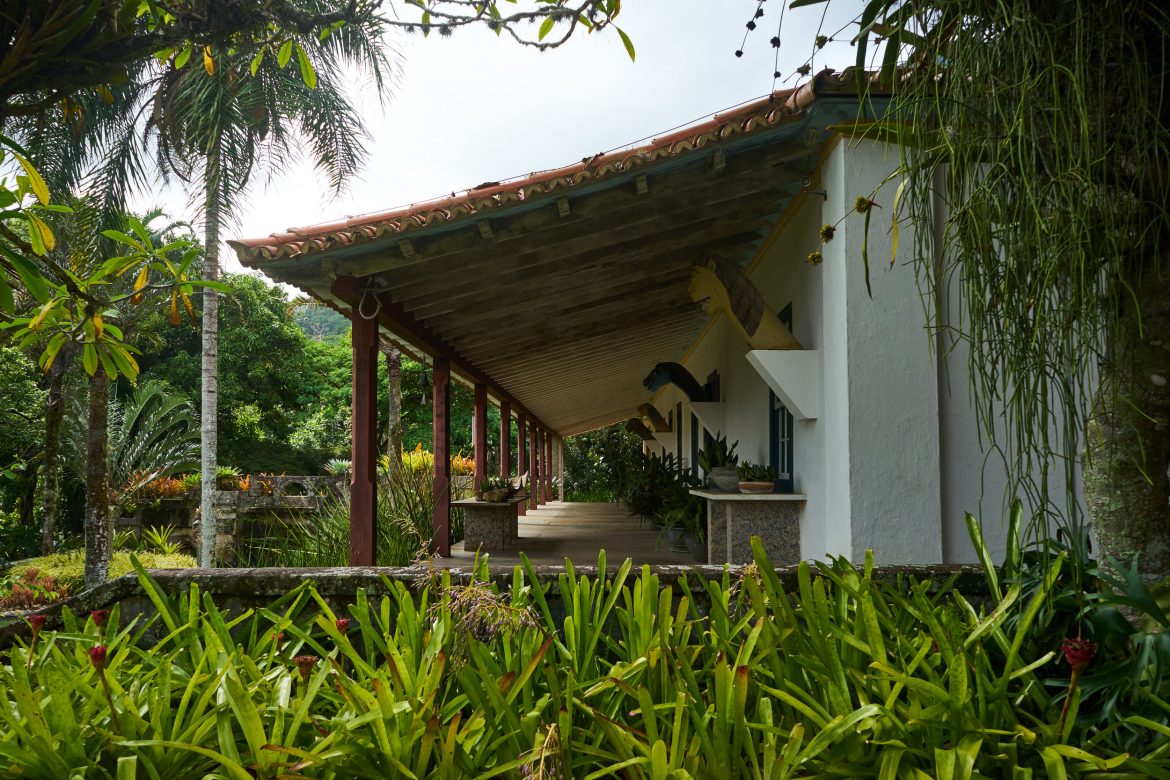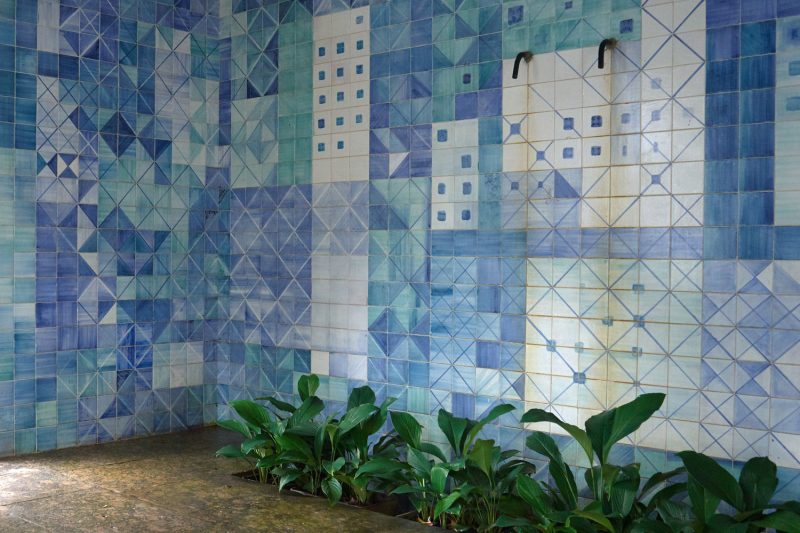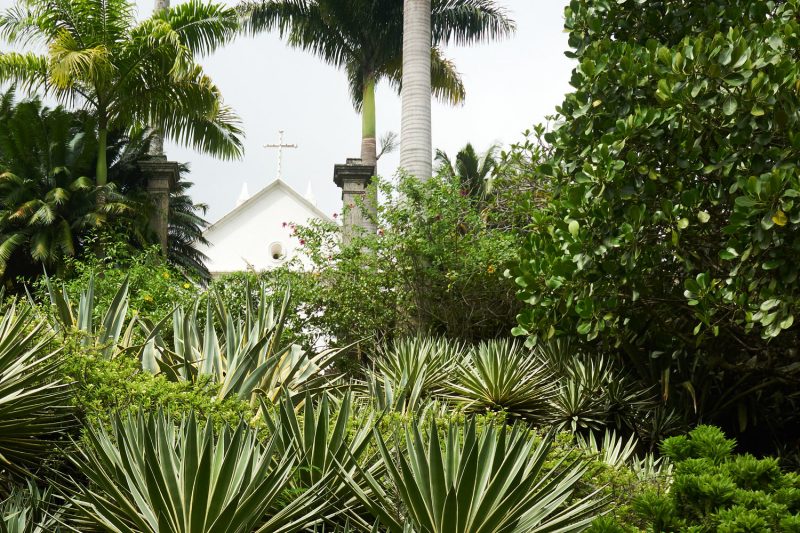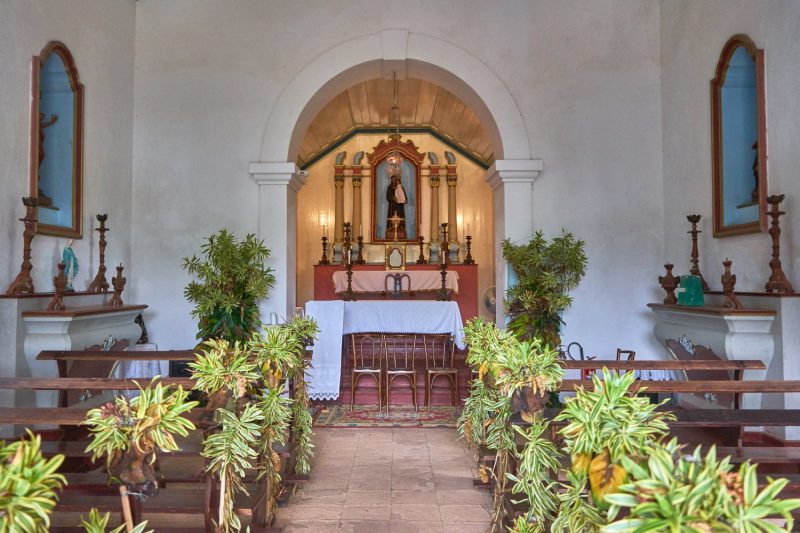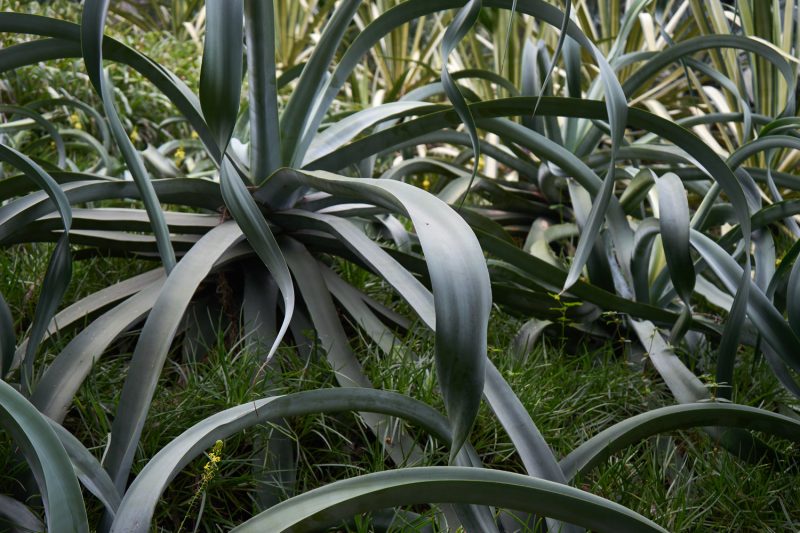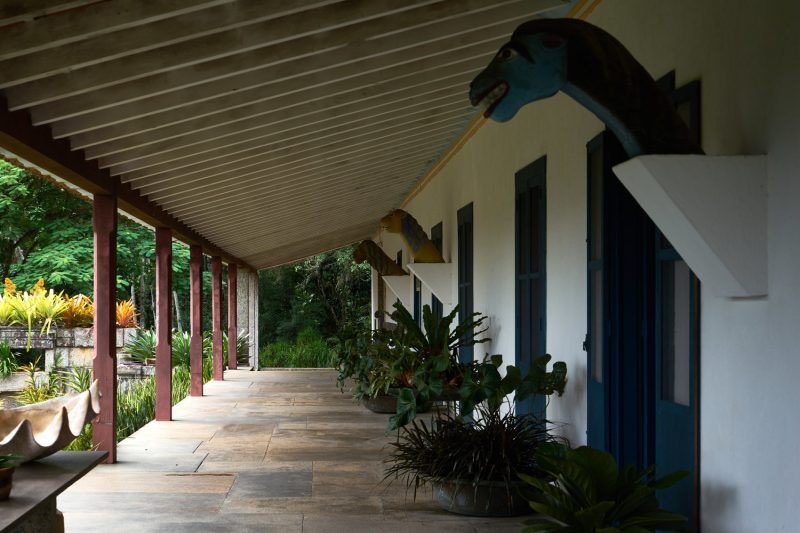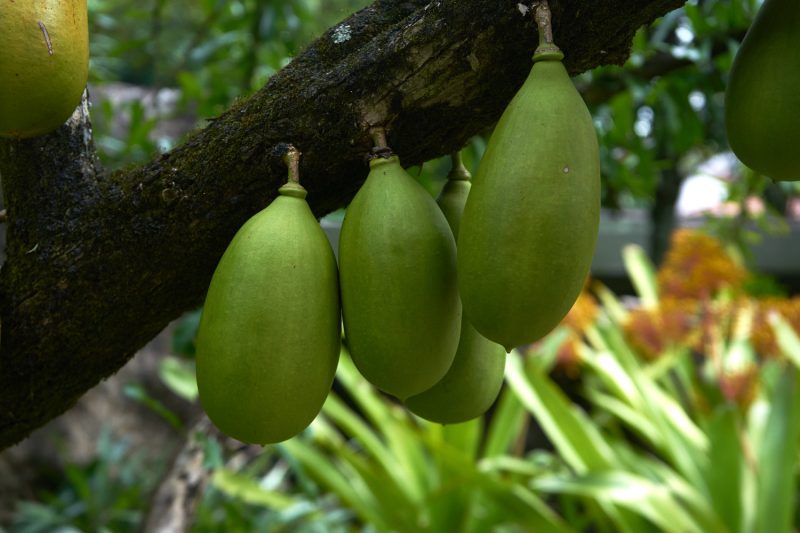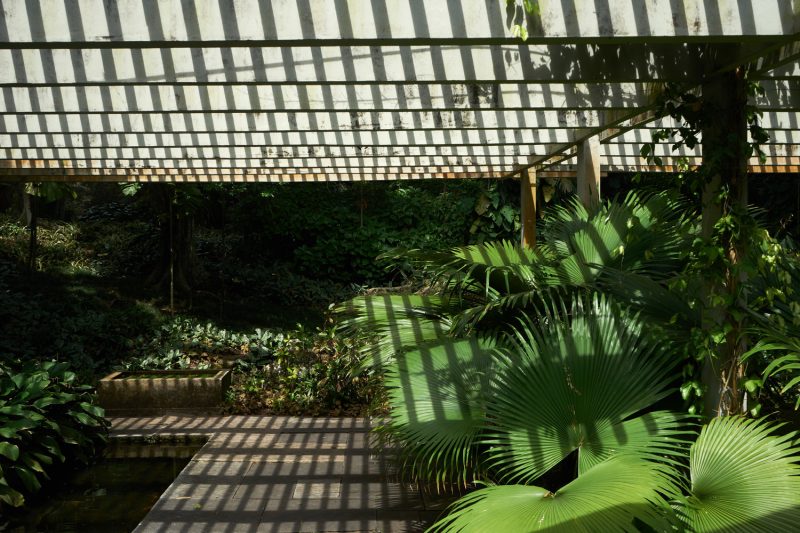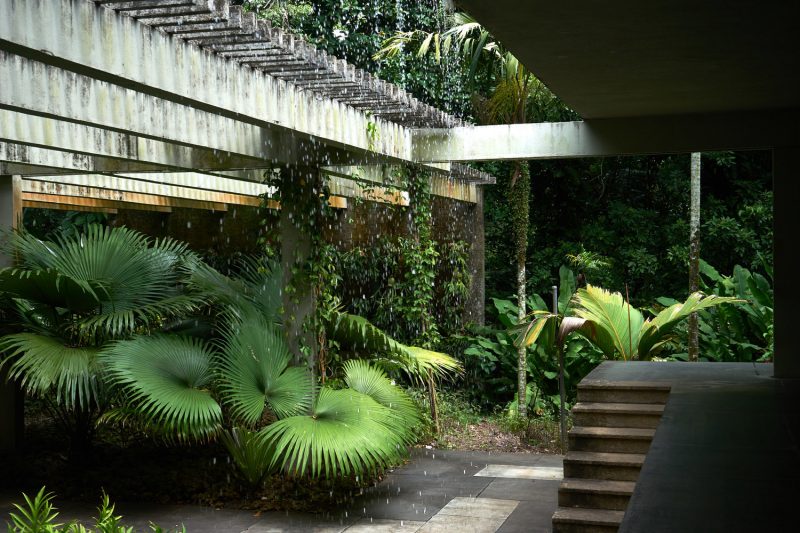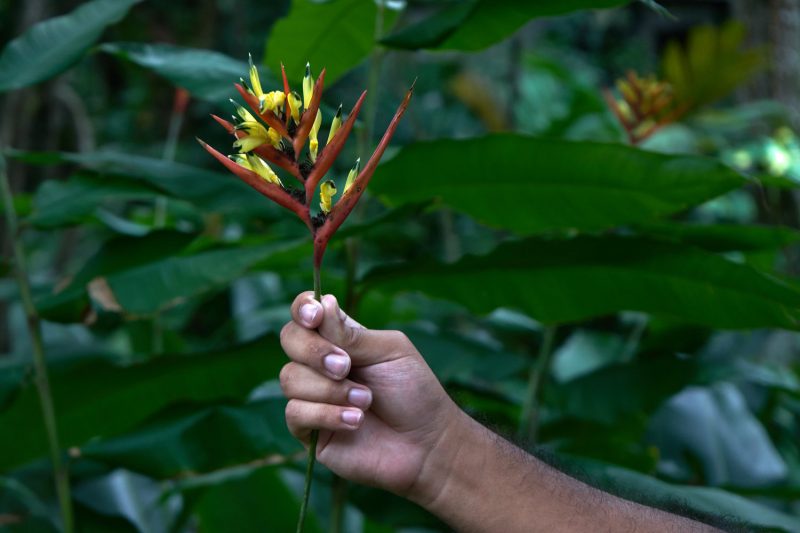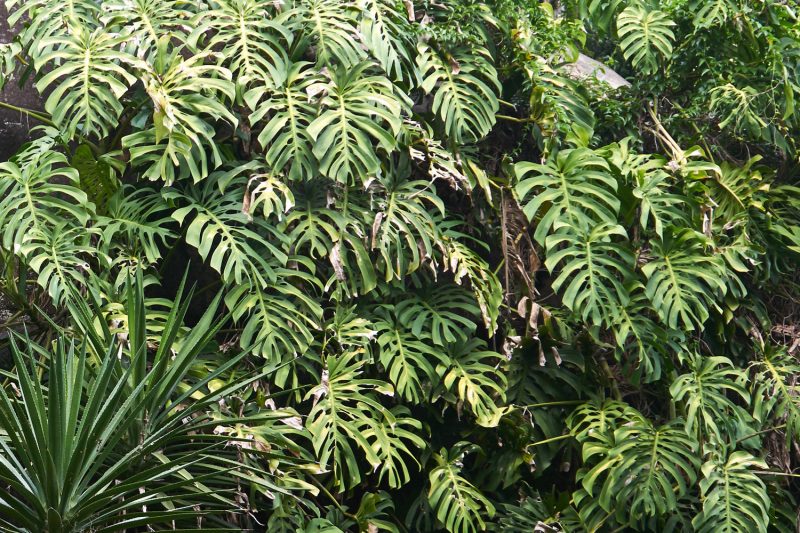Home to Brazil’s most famous landscape architect — Roberto Burle Marx — Sítio Burle Marx rests on 87 acres of lush, tropical vegetation. With a once-of-a-kind chapel and farmhouse studio, this property is a unique stop for travelers interested in landscape architecture and culture. But it’s not an easy trip to navigate on your own — both the distance from major cities, and lack of services call for an experienced guide — Gyde & Seek recently wrote about their experience and have recommended their expert naturalists such as Laís or Marcio to assist with your trip.
You may know him as the visionary behind Copacabana’s palm-lined mosaic esplanade—or Flamengo Park, the Cariocas’ UNESCO-designated waterfront playground. A contemporary (and often, a colleague) of Oscar Niemeyer and Lúcio Costa, Roberto Burle Marx has sowed tropical modernist gardens from Brasília to São Paulo and beyond. While his public spaces never fail to inspire, experienced design-trippers know to seek out the polymath landscape architect’s private haven in Rio’s still-agrarian West Zone.
From Ipanema or Leblon, it’s about an hour’s pilgrimage to the former colonial banana plantation now known as Sítio Burle Marx (though in 1949, when the designer acquired it, the commute would surely have taken longer). Technically within the city limits, the estate shares a “neighborhood” with protected wetlands, sleepy roadside fruit stands and lovely, empty beaches.
It was here that the multilingual painter, sculptor, opera singer, pianist, conservationist, and self-taught botanist built an interdisciplinary creative sanctuary—and spent nearly 50 years cultivating his then-unfashionable interest in Brazil’s indigenous flora. While fellow Brazilians were turning out their best imitations of European gardens, Burle Marx traveled extensively throughout his own country, collecting regional specimens for study and arranging them with a poet’s sensitivity. Today, his personal laboratory is one of the world’s foremost tropical plant collections. Fortunately for fellow bromeliad enthusiasts, it’s also a protected national monument.
Burle Marx’s relaxed, tonal palette and preference for asymmetry lend the gardens a distinctly natural feel, belying the precision and intention with which they were designed.
The loggia, which was often used as a workspace, features a modernist azulejo tile composition of the artist’s own design.
Our early April visit found the loggia courtyard carpeted in heavenly-smelling frangipani. Of course, the changing seasons make it possible to visit the gardens again and again and always see them anew.
The restored Benedictine chapel, originally built in 1688, continues to host village religious ceremonies today, just as it did throughout Burle Marx’s tenure in Guaratiba.
Naturally, weddings and other sacraments are celebrated with clippings from the surrounding gardens.
Sítio Burle Marx is home to some 3,500 cultivated species—octopus agaves among them.
Antique riverboat figureheads or carrancas, traditionally believed to protect Bahian traders from evil spirits, keep watch over the veranda.
Burle Marx, a classically trained painter, created the abstract marouflage ceiling mural in the ceramics room.
Capoeira aficionados may recognize the native “coité” fruit, long an essential design element of the berimbau—the Afro-Brazilian musical bow played to dictate the game’s rhythm. In Brazil, berimbau makers have historically fashioned the instrument’s resonance box or amplifier from the gourd-shaped fruit.
Raised by a Jewish German father and a devout French-Brazilian catholic mother from Pernambuco, Burle Marx was exposed to both fine art and folk art at an early age. His lovingly curated collection of pre-Columbian artifacts and sacred art speaks to an expansive, traveled aesthetic palate.
Burle Marx is said to have thrown legendary dinner parties amid the concrete pergola’s fan palms and reflecting pools. A skilled cook and enthusiastic host, he designed even the tablecloths himself.
Water almost always figures prominently in Burle Marx’s designs; in the case of the entertainment pavilion, a river on property supplies the statement waterfall fountain.
Burle Marx is credited with discovering upwards of 50 new plant species. Many of them, including heliconia burle marxii, have been named in his honor.
“From nature we can accept with humility its laws and suggestions,” said Burle Marx, “always acknowledging it to be the greatest artist of all, with more to teach than one can learn.”
Visits to Sítio Burle Marx are possible by appointment only; to plan a private day trip, reach out to one of Gyde & Seek’s expert naturalists.
*Story originally posted to Gyde & Seek “The Find.”

